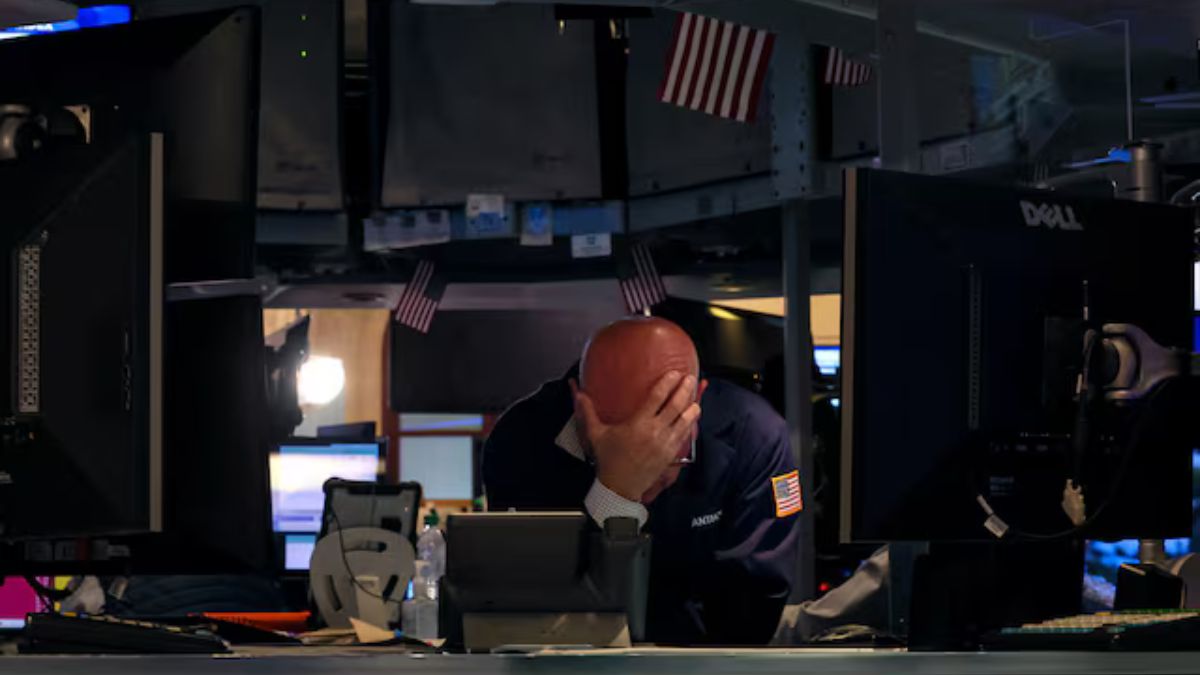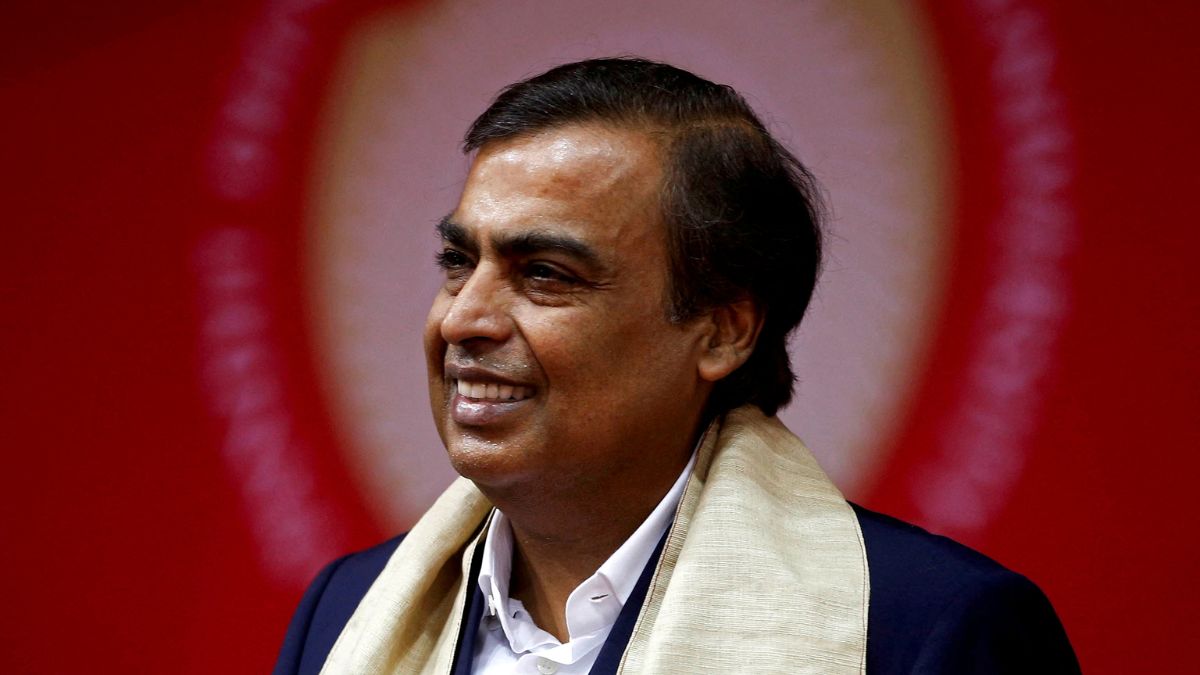As global markets reel and US unemployment hits a near three-year high, fears of a looming recession are intensifying. The recent jobs report showed only 114,000 new positions added, far below expectations, while the unemployment rate rose to 4.3 per cent. With mixed economic signals and the Federal Reserve’s cautious stance, experts remain divided on whether the US is on the brink of a recession read more
)
A specialist traders works at his post on the floor at the New York Stock Exchange (NYSE) in New York City, US, June 12, 2024. File Image/Reuters
Recent global stock market volatility has led to fears of a potential recession in the United States. Trading screens across major financial hubs like the US, Asia, and Europe have been overwhelmed with declining numbers, triggering concerns about the stability of the world’s largest economy.
A key factor contributing to these fears was the unexpectedly weak US jobs report for July. Employers added only 114,000 jobs, significantly below the forecast of 175,000, while the unemployment rate climbed to 4.3 per cent, the highest since October 2021.
The increase in unemployment has sparked discussions around the “Sahm rule,” which posits that a recession is imminent if the three-month average unemployment rate rises by half a percentage point from its lowest level in the previous 12 months.
As of July, this average stood at 4.1 per cent, compared to the low of 3.5 per cent over the last year, edging the US closer to the rule’s recession threshold.
WATCH:
Additionally, the US Federal Reserve’s recent decision to maintain interest rates, despite other central banks like the Bank of England and the European Central Bank lowering theirs, has added to the uncertainty. While Fed Chair Jerome Powell hinted at a possible rate cut in September, the delay has led to speculation that the Fed might be too late to prevent an economic downturn.
What is the economic outlook?
The mixed economic signals have led to varying interpretations among experts. Claudia Sahm, the economist behind the Sahm rule, told CNBC, “We are not in a recession now,” but added, “The momentum is in that direction.” She stated that while a recession isn’t inevitable, there’s ample room for interest rate cuts to mitigate risks.
Neil Shearing, Chief Economist at Capital Economics, was quoted by BBC, noting that while the jobs report was disappointing, it wasn’t disastrous. He highlighted that factors like Hurricane Beryl might have temporarily weakened payroll figures and that there was no significant increase in firings or a dramatic drop in average weekly hours worked.
Simon French, Chief Economist at Panmure Liberum, urged caution, suggesting that while the recent data is concerning, it doesn’t necessarily signal an immediate reappraisal of the US economy’s health. He told BBC, “It is another data point at a time when liquidity is thin and you’ve got a lot of things to worry about.”
Are there any positive signs?
Despite these concerns, there are still positive signs in the economy. The second quarter of the year saw a 2.8 per cent annualised growth rate, double that of the first quarter and consistent with pre-pandemic averages.
Key metrics like final sales to private domestic purchasers remained strong at 2.6 per cent, reflecting steady private-sector demand.
The services sector also showed resilience, with the Institute for Supply Management’s services activity index returning to expansion and new orders and employment metrics rebounding.
According to Chris Williamson, Chief Business Economist at S&P Global Market Intelligence, “The July … surveys are indicative of the economy continuing to grow at the start of the third quarter at a rate comparable to GDP rising at a solid annualised 2.2 per cent pace.”
Inflation, a significant concern in recent years, has shown signs of cooling, approaching the Fed’s 2 per cent target. However, the year began with a surprising uptick in inflation, delaying the Fed’s consideration of rate cuts.
What are the troubling signs?
Another troubling sign is the rising delinquency rates among US households. The New York Fed reported a slight increase in the household debt delinquency rate, reaching 3.2 per cent in the first quarter of 2024.
Notably, delinquency rates have surged among credit-card borrowers at their borrowing limits, often younger and lower-income individuals. This trend could potentially ripple through the broader economy, exacerbating financial stress.
The stock market’s response to the recent data has been harsh. The Dow Jones Industrial Average plunged over 700 points, and the S&P 500 dropped by 2 per cent, driven by fears of a recession. Major investment banks like Goldman Sachs and Citigroup adjusted their expectations, now anticipating more aggressive rate cuts in the coming months.
What about the political implications?
The recent economic developments have also taken on political dimensions, particularly as the US approaches the next presidential election. Former US President Donald Trump’s campaign quickly seized on the weak jobs report, claiming it as “more evidence that the Biden-Harris economy is failing Americans.”
Despite the alarm bells, some analysts urge caution against overreacting. The New York Fed’s nowcast projects a 2.1 per cent growth rate for the third quarter, while the Atlanta Fed anticipates a 2.5 per cent growth rate.
Several economic indicators, such as industrial production and capacity utilisation, remain robust. Moreover, real-time consumption indicators, including air travel and retail sales, show no signs of slowing down.
Also Read: What was Black Monday in 1987 that is being compared to the August 5, 2024 stock market crash?
While there are undeniable signs of economic softening, it remains uncertain whether the US is headed for a recession.
With inputs from agencies

 1 month ago
69
1 month ago
69
)
)
)
)
)
)
)
)
)
)
)
)
)
)
)
)
)
)
)
)
)
)
)
 English (US) ·
English (US) ·